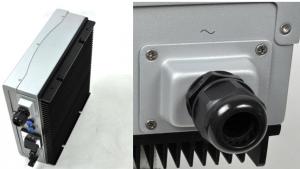Byd Solar Inverter
Byd Solar Inverter Related Searches
Poland Solar Inverter Solar Solar Inverter Solar Based Inverter Sunny Solar Inverter Inverter Hybrid Solar Solar Inverter Hyderabad Smart Inverter Solar Inverter Solar Hybrid Smart Solar Inverter Hybrid Solar Inverter Solar Edge Solar Inverter Solar Inverter Poland Battery Solar Inverter Deye Solar Inverter Solar Edge Inverter Easy Solar Inverter Bp Solar Inverter Uk Solar Inverter Deye Hybrid Solar Inverter Solar Battery Inverter Solar Smart Inverter Sun Solar Inverter Solar Grid Inverter Smart Hybrid Solar Inverter Inverter Solar Edge Solar Hybrid Inverter Eko Solar Inverter Hybrid Inverter Solar Solaredge Solar Inverter Solar Edge Hybrid InverterByd Solar Inverter Supplier & Manufacturer from China
Byd Solar Inverter is a high-quality product that is designed to optimize the performance of solar power systems. These inverters play a crucial role in converting the direct current (DC) generated by solar panels into alternating current (AC) that can be used by homes and businesses. They are essential components in ensuring the efficiency and reliability of solar energy systems, making them a popular choice among those looking to harness the power of the sun for their energy needs.The Byd Solar Inverter is widely used in various applications, including residential, commercial, and industrial settings. They are particularly useful in areas with high solar irradiance, where the potential for generating clean, renewable energy is maximized. These inverters are also suitable for off-grid and grid-tied solar systems, providing flexibility in how they can be integrated into existing power infrastructure. Their compact design and user-friendly interface make them easy to install and maintain, further enhancing their appeal to a broad range of users.
Okorder.com is a reputable wholesale supplier that offers a large inventory of Byd Solar Inverters at competitive prices. With a commitment to providing top-notch customer service and support, Okorder.com ensures that customers can access the products they need to power their solar energy projects. By partnering with Byd, a leading manufacturer in the solar industry, Okorder.com is able to deliver high-quality inverters that meet the demands of a growing market for renewable energy solutions.
Hot Products
















































